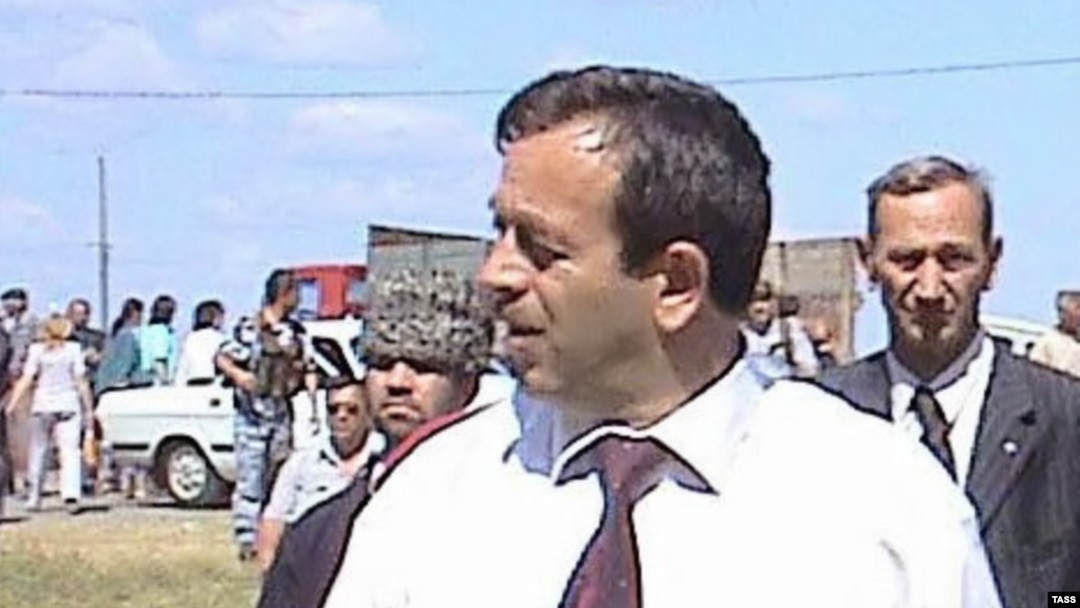GROZNY, Russia -- A human rights watchdog in Russia's Chechnya region has demanded an investigation into a suspected mass grave where it said Russian soldiers buried up to 300 civilians they had killed in an attack.
Russian forces fought two wars against separatist rebels in Chechnya in which both sides killed and tortured civilians. In the past few years the fighting has subsided and local people are slowly starting to seek redress for acts of violence.
Chechnya's official human rights ombudsman Nurdi Nukhazhiyev said a group of residents had told him last week about the suspected mass grave, at an asphalt plant about 25 kilometers from the Chechen capital, Grozny.
Men, Women, And Children
The ombudsman said it contained the bodies of men, women, and children who were killed on Oct. 30, 1999, when their column of vehicles came under fire from Russian troops.
Russia's Defense Ministry could not immediately be reached for comment. In the past, Russia's military has denied ystematic abuses during the fighting in Chechnya, but said insurgents routinely used civilians as cover.
"All the vehicles [in the convoy] were carrying white flags made out of bedsheets, so the troops would not shoot," Nukhazhiyev said on July 1, addressing a conference on missing persons organised by Chechnya's local government. He said they were refugees trying to reach another part of the region to escape the fighting.
"However, as soon as the column came over the brow of the hill ... the federal forces opened fire," he said. "After completely destroying the convoy of refugees, the soldiers buried the corpses together with their vehicles and belongings in a big pit on the territory of the asphalt plant, which is located near the road."
He said witness accounts suggest between 250 and 300 people were buried at the site. Human rights groups and the media reported the attack on the convoy at the time.
Unearthed Human Remains
The ombudsman said the mass grave was discovered eight months later, when a mechanical digger working at the plant accidentally dug up human remains and items of clothing. Investigators have never exhumed the bodies.
Nukhazhiyev said he wanted the remains at the site to be subjected to forensic tests to establish their identity.
The separatist rebels and Islamist militants who waged two wars against Moscow's rule starting in 1994 have now either been killed, fled abroad, or driven into remote mountain hideouts.
There are still sporadic bombings and firefights, but Chechnya is now largely peaceful. It is run by Ramzan Kadyrov, a former rebel who professes loyalty to the Kremlin.
Moscow provides massive subsidies to Chechnya, and investigating allegations of wartime abuses by Russian forces is a sensitive issue for the local authorities.
Russian forces fought two wars against separatist rebels in Chechnya in which both sides killed and tortured civilians. In the past few years the fighting has subsided and local people are slowly starting to seek redress for acts of violence.
Chechnya's official human rights ombudsman Nurdi Nukhazhiyev said a group of residents had told him last week about the suspected mass grave, at an asphalt plant about 25 kilometers from the Chechen capital, Grozny.
Men, Women, And Children
The ombudsman said it contained the bodies of men, women, and children who were killed on Oct. 30, 1999, when their column of vehicles came under fire from Russian troops.
Russia's Defense Ministry could not immediately be reached for comment. In the past, Russia's military has denied ystematic abuses during the fighting in Chechnya, but said insurgents routinely used civilians as cover.
"All the vehicles [in the convoy] were carrying white flags made out of bedsheets, so the troops would not shoot," Nukhazhiyev said on July 1, addressing a conference on missing persons organised by Chechnya's local government. He said they were refugees trying to reach another part of the region to escape the fighting.
"However, as soon as the column came over the brow of the hill ... the federal forces opened fire," he said. "After completely destroying the convoy of refugees, the soldiers buried the corpses together with their vehicles and belongings in a big pit on the territory of the asphalt plant, which is located near the road."
He said witness accounts suggest between 250 and 300 people were buried at the site. Human rights groups and the media reported the attack on the convoy at the time.
Unearthed Human Remains
The ombudsman said the mass grave was discovered eight months later, when a mechanical digger working at the plant accidentally dug up human remains and items of clothing. Investigators have never exhumed the bodies.
Nukhazhiyev said he wanted the remains at the site to be subjected to forensic tests to establish their identity.
The separatist rebels and Islamist militants who waged two wars against Moscow's rule starting in 1994 have now either been killed, fled abroad, or driven into remote mountain hideouts.
There are still sporadic bombings and firefights, but Chechnya is now largely peaceful. It is run by Ramzan Kadyrov, a former rebel who professes loyalty to the Kremlin.
Moscow provides massive subsidies to Chechnya, and investigating allegations of wartime abuses by Russian forces is a sensitive issue for the local authorities.


